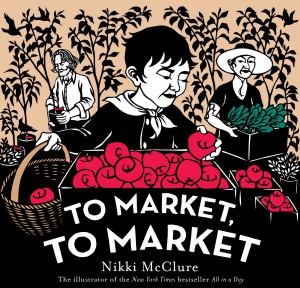Though few of us may stop to consider the fact, the modern farmers market is the true market of humanity. The vast, fluorescent, all-in-one supermarkets where most of us buy our groceries are of a species only about 65-years-old. They were born out of the boom of technology, cars, and suburbs that became the West’s reward for winning the Second World War. They were a dramatic upheaval, and it’s a testament to their power that so many of us today see them as the default purveyor of food.
purveyor of food.
But the farmers market is the original market. It’s the market that grew up along the banks of the Tigris and Euphrates. It’s the market that still delivers the goods on most corners of Earth. And—with a simple obviousness that should make us stop and consider just how marketing psychology and a buck have shaped America—it’s the market that provides poor people all over the world with good, healthy food. Only in America are the poorest people the fattest. Elsewhere, they pay their neighbors for vegetables picked this morning and a chicken killed last night.
But some unsung, heroic bureaucrats in D.C. are getting it together. The Feds have committed $4 Million Dollars to equip the country’s 7,100 farmers markets with the apps and bandwidth to process food stamps. Food stamps aren’t really stamps anymore, they are electronic credits distributed among a few acronymic programs like the EBT and WIC. Right now, less than a quarter of those 7,100 markets are able to swipe plastic cards and send a series of digits zinging through wires to a database somewhere. Enter Big Government and their aim to add another 4,000 markets to that list. And enter a company named the Novo Dia Group that has developed an iPhone app to take the process wireless.
And providing the option helps our neediest get healthier. New York City connected 16 markets to the benefits system in 2010, bringing the total to 40. Here’s the progress:
EBT/WIC sales in 2000 – $953
Sales in 2009 – $251,256.
Sales in 2010 – $505,166
And where were most of those sales? The market at 175th Street in the Bronx. If you live here, you get me. If you don’t, I bet you’ve heard enough to guess.
Most food stamp credits in NYC—62%—purchased vegies. Another 20% purchased fruit. That’s fresh produce packed with pretty much the most nutrients as possible short of pulling food out of the ground or off of the tree and putting it in your mouth right then and there.
And folks pick up the habit, too. A UCLA study attached food stamp mentors for six months to women receiving benefits after giving birth. Six months after the mentors bowed out, the women were continuing to build menus off farmers market food. That presence of local, healthy food in their homes increased by one-and-a-half servings per 1000 calories over the pre-farmers market baseline.
Double that $4 Million coming out of D.C. Increasing the local food in our homes increases the strength in our people increases the talent and drive in our country. Six thousand years of civilization proves it.
(Some of the information referenced above was reported via the A.P. by Allen G. Breed.)
